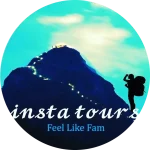Horton Plains National Park is a breathtaking natural wonder in Sri Lanka that attracts adventurers and nature lovers alike. This article will take you on a journey through its beautiful landscape, rich in biodiversity, and fascinating history, and the best guide to planning an unforgettable visit.
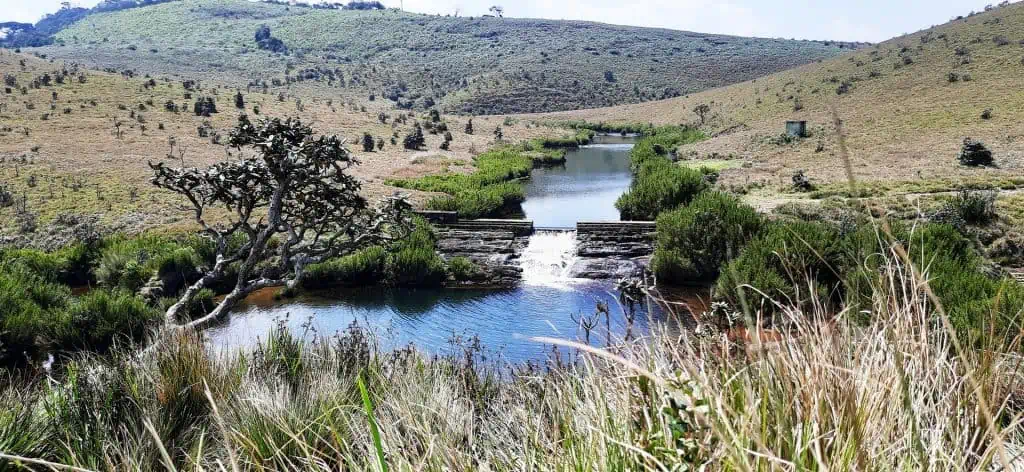
Introduction to Horton Plains National Park
Horton Plain is the highest mountain park in Sri Lanka, one of the 25 highest mountain parks in the world, and one of the best national parks to explore on your own. The one-way route is 9 km long and takes about 3 hours. Located at an altitude of 7,200 feet above sea level, the park covers an area of approximately 7,800 hectares, making it the highest plateau in Sri Lanka. Furthermore, this park is full of beautiful landscapes, waterfalls, and abundant wildlife.
In the past, this plain was called Mahavali Plain because of the origin of the Mahavali River. But later, The park was named after Wilmot Horton, who was the British Governor-General of Sri Lanka from 1831 to 1837 after visiting the area while hunting one day in 1836.
A Glimpse into the Park’s History
The history of Horton Plains National Park dates back to the Stone Age and there is evidence of early human settlement. For many years it was a hunting ground of the British colonialists and later as a protected national park protecting its natural value for future generations.
Many valuable facts about the history of the park can be found in the reports of Major Thomas William Rogers, who worked in the Ceylon Rifle Department during the British colonial period. According to those reports, it reports that a large number of elephants lived here at that time and he also killed about 1400 Sri Lankan elephants there. Also, Major Thomas Skinner and Samuel Baker were prominent elephant hunters of the time and they also reported many valuable facts about the park in their notebooks.
Also, according to legends, it is said that King Ravana used the Horton Plain to grow Barley and it is believed that the Thotupala mountain located in the park was used to land his plane called Dhadu Monara.
The Natural Beauty of the Park
Diverse Flora and Fauna
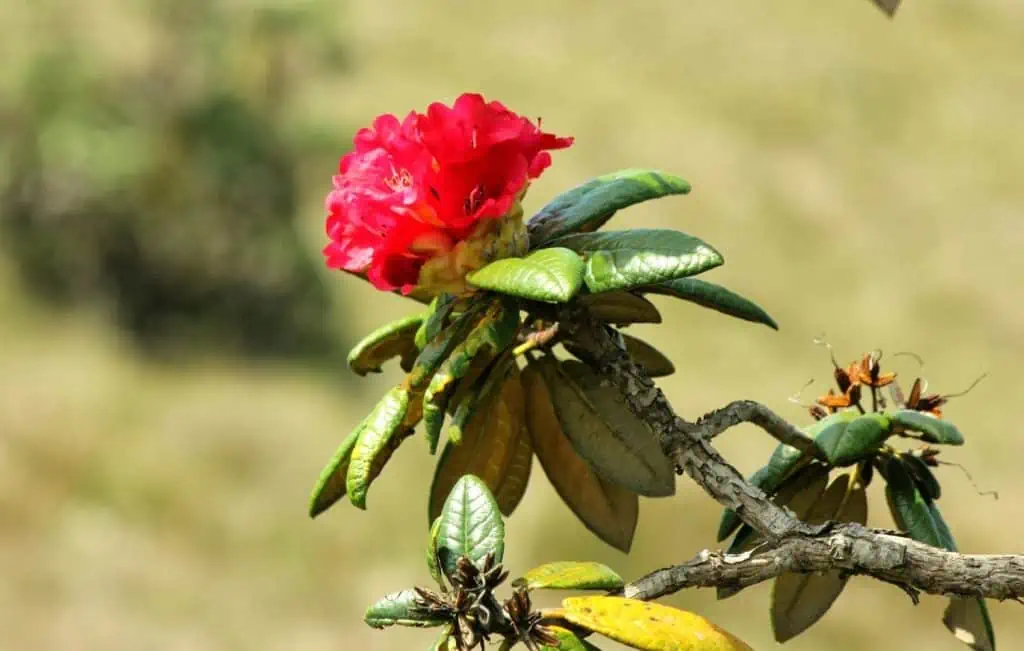
Horton Plains National Park is rich in both flora and fauna of high botanical value. It is home to many animals such as Sri Lanka’s largest herd of Sambar deer as well as wild boars, Leopards, and Sri Lankan monkeys. Regarding the vegetation of the park, Most belongs to the semi-montane rainforest and cloud forest category, and wetland and grassland plants are also abundant. It has been found that of the total area of 1236 hectares, 39 hectares belong to cloud forests.188 plant species are found in the area and 63 of them are endemic to Sri Lanka. Also, 64 species of birds, 19 species of mammals, 14 species of amphibians, and 11 species of fish have been found.
Suggested Read – Pigeon Island National Park
The Iconic Baker’s Falls
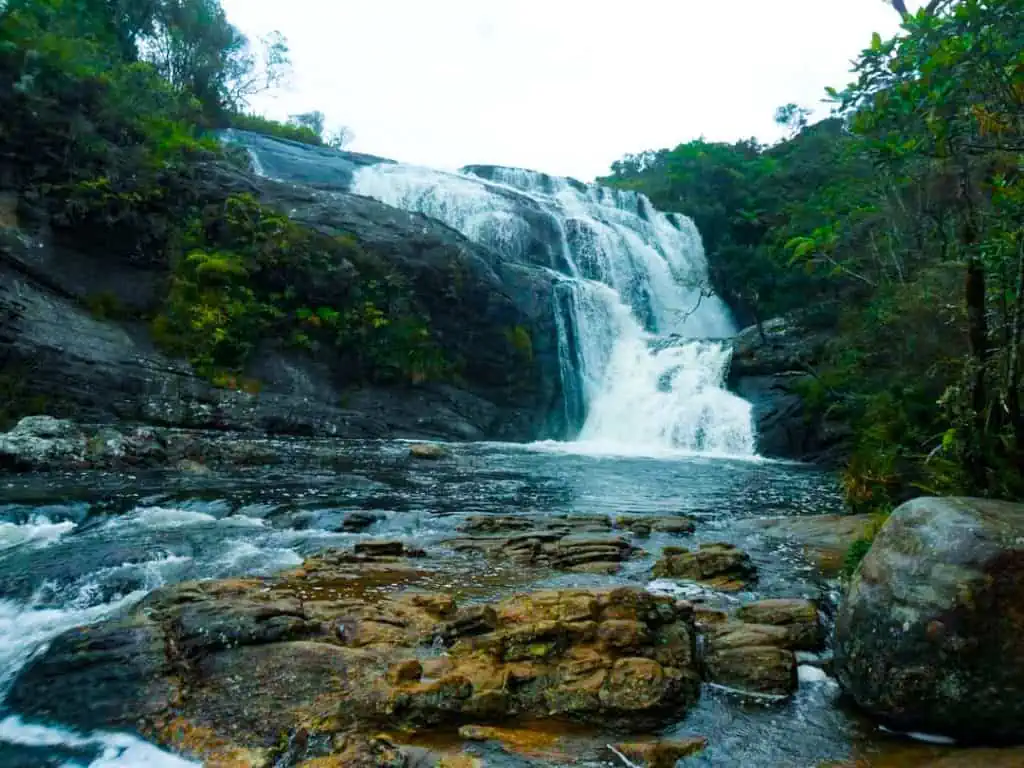
Baker’s Falls is one of the tourist attractions of the park and the trail leading to it is beautifully decorated with moss-covered trees and ferns. The area around the waterfall has a rather dark environment and in that environment, it is possible to see the dusky striped squirrels which are endemic to Sri Lanka.
World’s End
The end of the southern slope of Sri Lanka’s Central Highlands is also located in the Horton Plain and is called the world’s end. This is the beginning of a huge hell about 880 meters high and it offers a very beautiful view on a clear day.
Suggested Read – Sinharaja Rain Forest
Planning Your Visit
The best time to visit Horton Plains
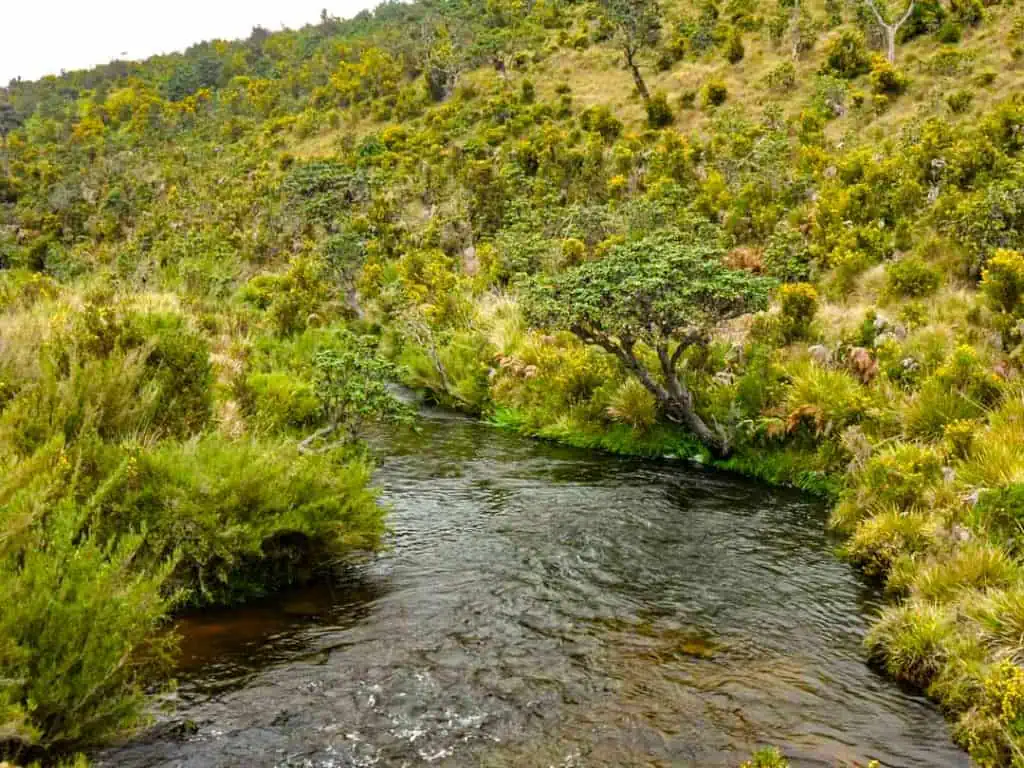
Horton Plains National Park is recommended to be visited between December and March for its best experience when the weather is cool and dry ensuring clear views and comfortable hiking conditions.
Entry Fees and Permits to Horton Plains National Park
A ticket to enter the park costs approximately $45 including all taxes. It must be obtained at the park entrance before starting your adventure. A guided tour can be joined to enhance your experience and knowledgeable guides will provide insight into the park’s environment, history, and hidden gems you might otherwise miss.

Preparing for Your Hike
Before the start of the trip, Wear comfortable hiking shoes and carry enough water to ensure an easy journey. In the rainy season, make sure you have an umbrella or raincoat with you. Don’t forget your camera to capture the amazing landscapes.
Wildlife Encounters
Suggested Read – Yala National Park
Wildlife Encounter

Along with birds like Sri Lankan Whistle Thrush, and Sri Lankan Bush Warbler, there is a high chance of seeing endemic animals like the Purple-faced Langer and the Dusky Striped Squirrel. Besides them, a large number of Samber deer can be seen. Rarely, Sri Lankan leopards can also be seen roaming the park
Camping
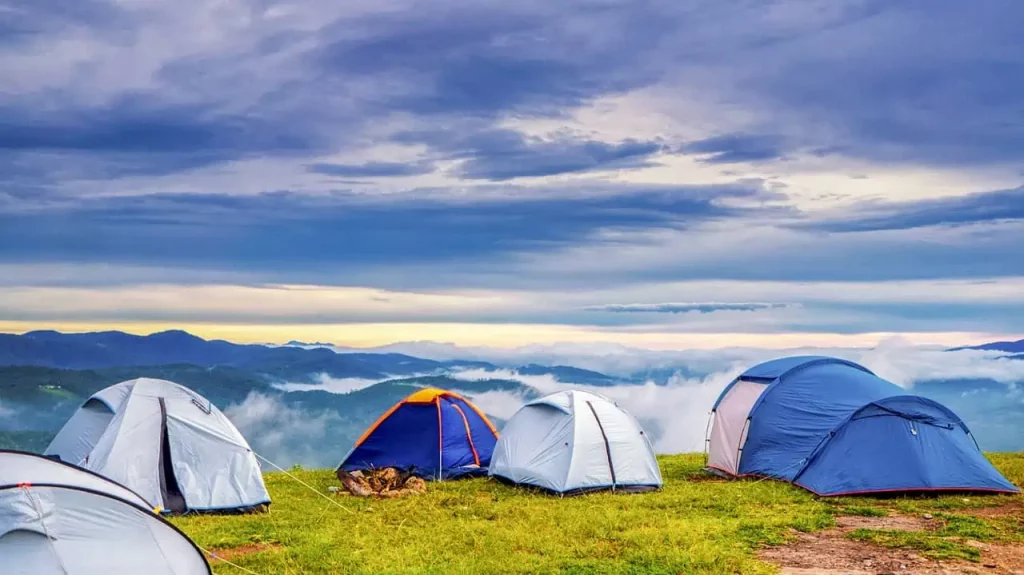
Camping in a National Park is a great experience, but camping in Horton Plains Park is an even more divine experience. But for this, a few special things have to be done apart from the normal process. Among them, getting permission from the Forestry Department is essential. Visit this website for complete details
Weather Conditions and rainfall
As the climate at high altitudes can be unpredictable at all times, it is necessary to keep up-to-date with the ever-changing weather conditions. The park is foggy most of the day but has a temperate climate, neither too cold nor too hot. The average annual temperature in the area is around 13C, with daytime highs of 27°C and nighttime lows of 5°C. The average rainfall in Horton Plains Park is about 5000 mm, while the average rainfall in the surrounding areas is 2540 mm. Park receives most of the monsoon rainfall and the region receives about 100 mm of rainfall per month throughout the year.
Conservation Efforts
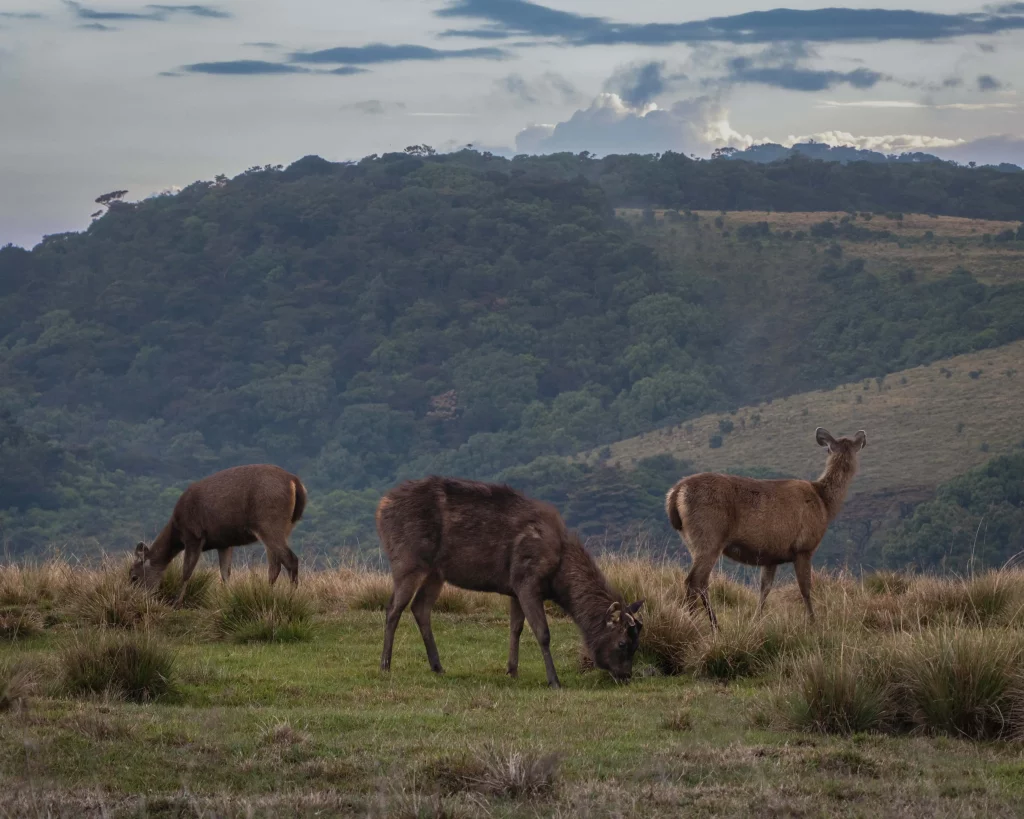
Horton Plains National Park is a UNESCO heritage site dedicated to preserving its pristine environment. Contribute what you can during your visit to the efforts made by the Wildlife Department of Sri Lanka to protect its sensitive ecosystems. For that, Make sure you do not throw waste like polythene into the wild, and you are traveling only on the designated routes that do not harm wild animals and plants.
Nearby Attractions
Nuwara Eliya – The ‘Little England’
Among the nearby attractions that can be visited around the Horton Plains, Nuwara Eliya City is the first. There are a lot of things to do in Nuwara Eliya and places such as Gregory Lake, Nuwara Eliya Post Office, etc. are popular.
Ambewela,Newzeland and Highland Farms
Ambewela, New Zealand, and Highland dairy farms are other attractions en route to the park and all these establishments are pioneers in milk powder production in Sri Lanka. Join a short visit to these institutes for better knowledge about animal husbandry and milk powder production.
Strawberry Farms
The city of Nuwara Eliya has won the highest reputation for strawberry cultivation in Sri Lanka. There are several large strawberry farms en route to Horton’s Place and be sure to stop by and taste their products.
Tea Plantations

Another activity you can do around Horton Plains is to visit a tea plantation and experience the process of making tea, from picking the leaves to brewing the perfect cup of Ceylon tea.
Things to do in Horton Plains National Park
- Take photos and videos
- Enjoy the fresh air whilst walking through the plains
- Sit quietly to see what wildlife you can spot
- If there is any debris in your path, take it out of the park as much as possible and dispose of it systematically.
- Take all your waste with you.
Things Not To Do
- Do not use any non-corrosive liquid on the polythene
- Avoid smoking, alcohol, and drugs
- Do not harm the environment and animals
- Avoid adding your waste to water and the environment
- Do not give food or other things to animals
- Avoid going down water sources, waterfalls, and waterways
- Do not use fire
- Stay away from hills and precipices
Things To be carried To Horton Plains National Park
- Carry water, food, and other essentials but bring back what you carry with you
- Sun cream and Sunglasses
- Raincoats and umbrellas
Things Not To Be Carried
- Polythene and plastic
- Smoking, alcohol, and drugs
- Ignition Equipment
- Sound pipes and musical instruments
Conclusion
Horton Plains National Park is a treasure trove of natural beauty, wildlife, and cultural experiences. Whether you’re an avid hiker, a wildlife enthusiast, or simply seeking tranquility amidst nature, this park has something remarkable to offer every traveler. So, pack your bags, embark on this adventure, and let Horton Plains captivate your heart.
Frequently Asked Questions
- Is it possible to visit Horton Plains year-round?
While the park is open year-round, the best time to visit is from December to March when the weather is most favorable for trekking and enjoying clear views.
- Are there any age restrictions for trekking in Horton Plains?
There are no strict age restrictions, but some trails may be physically demanding. It’s essential to choose a suitable trail based on your fitness level.
- Is Horton Plains National Park suitable for families with children?
Absolutely! While some trails are more challenging, there are options for family-friendly hikes and picnics. Always prioritize safety and follow park guidelines.
- Can I visit Horton Plains in one day from Colombo?
Yes, it’s possible, but it’s a long day trip. Consider staying in nearby towns like Nuwara Eliya or Ella for a more relaxed experience.
- Can I spot leopards during a visit to Horton Plains National Park?
Leopards are elusive creatures, but they do inhabit the park. Spotting them requires patience and a bit of luck.
- What should I wear for a hike in Horton Plains?
Wear comfortable, moisture-wicking clothing, and sturdy hiking shoes. Layering is advisable due to varying temperatures throughout the day.
- Are there restrictions on photography within the park?
Photography is allowed, but flash photography is discouraged, especially when capturing wildlife. Always follow ethical photography guidelines.
- Is it safe to hike at Horton Plains Park?
Yes, it’s safe to hike at the park. However, it’s essential to follow park guidelines and stay on designated trails for your safety and to protect the environment.
- Is camping the only accommodation option within the Horton Plains National Park?
Camping is a unique option, but there are also lodges and guesthouses in nearby towns like Nuwara Eliya for those seeking more comfort during their stay.
